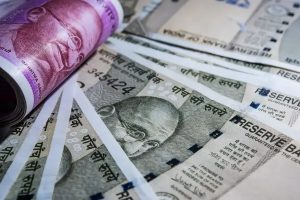Cogent Stimulus Ideas By The Reserve Bank Of India

The Reserve Bank of India (like any other Central Bank) uses monetary policy tools to meet its two main objectives: economic growth and stable prices. On March 27th, RBI in its Monetary Policy Committee Meeting announced few major decisions.
CRR (Cash Reserve Ratio) is one of the tools that RBI doesn’t use quite often. It’s worth noting that CRR deposit is a dead/non-income asset for Banks as RBI does not pay any interest on it. It adds to the costs of funds and is also an opportunity loss for the bank which could have invested this amount in income-generating/portfolio diversification assets. Earlier, CRR was 4% of NDTL (Net Demand and Time Liabilities) but is now reduced to 3% of NDTL (read Deposits). CRR which now stands decreased to 3%, essentially means the availability of huge surplus liquidity with banks which may be used for new strategic initiatives.
Taking the talks on liquidity further, LAF (Liquidity Adjustment Facility) is a monetary policy tool that facilitates borrowings for banks from RBI (Repo) and borrowings by RBI from Banks (Reverse Repo). To put it simply, in a Repo agreement Banks can borrow from RBI and in Reverse Repo, RBI can borrow from banks through open market operations. In its attempts to reduce interest rates, RBI has reduced Repo rate from 5.15% to 4.4% (75 basis points less). Banks can borrow at lower rates now and lend it at lower interest rates (by passing on the benefit to its customers). Reverse Repo (which has normally been around 25 bp less than Repo) is reduced by 90 basis point (bp) from 4.9% to 4.0%. This will be a disincentive for banks to park surplus funds with RBI and it may find better use in the system by lending this money.
This is plain vanilla or an extremely basic understanding of these steps/announcements. Increased liquidity and lower cost of funds for banks do not necessarily mean lower interest rates; banks may not pass on the whole or part of this to its customers. A complete understanding of current announcements/steps is not possible without a comprehensive understanding of a couple of new (follow-up) tools used by RBI i.e. LTRO (Long Term Repo Operations) February 6th, 2020 and Operation Twist December 23rd, 2019.
It is very impressive that RBI (taking a cue from leading global central banks) has implemented new tools like ‘Operation Twist’ (taking a cue from Federal Reserve System) and LTRO (Long Term Repo Operations). Operation Twist addressed flattening of a steep yield curve or in other words quelled rising long term interest rates (it was done by selling short term G-Ses and buying long term G-Secs). It was an important step because major economic decisions of investment and consumption are taken on the basis of long term interest rate.
LTRO was initiated with a view that — offering banks durable longer-term liquidity at the Repo as a benchmark rate, can help them lower the rates they charge on retail and industrial loans while maintaining their margins. Under LTRO, RBI provides longer-term (one- to three-year) Repo rate loans to banks at the prevailing Repo rate plus 25 bp. The advantage of LTRO is that it will help to reduce the marginal cost of fund-based lending rate without reducing policy rates, inject liquidity in the system and facilitate a faster transmission of interest rate cuts.
The announcement on March 27th also included increasing the accommodation under the marginal standing facility (MSF) from 2% of the statutory liquidity ratio (SLR) to 3% of SLR. Essentially, it is a liquidity comfort measure for the banking system to manage through stressed times.
All these highly positive steps ideally will result in higher liquidity, a robust banking system in stressed times, lower cost of funds resulting in lower rates charged by the banks on retail and industrial loans, while maintaining their margins. In my opinion, this should be substantial fodder (Investments) to kick in a virtuous cycle for the Indian economy. There were other announcements like Moratorium on loans, easing working capital etc which are again very cogent and really need of the hour and are self-explanatory hence I haven’t included them in this analysis.
As far as the startup ecosystem in India is concerned, I predict a very bright and exciting time ahead. Low long-term interest rates will attract investments/capital ( always remember important economic decisions like investments are taken on the basis of long term interest rates), virtuous cycle, high liquidity resulting in increased availability of cost-effective funds, a substantial increase in demand (both business and consumer) and a drive backed by positive sentiment/s. These 3 or more weeks cannot take away an entrepreneur’s blood and sweat, there is plenty to look forward to in the very near future, and the time at hand should be used to build yourself/your team to act on new opportunities. For example, Fintech Startups have a lot to look forward to because there will be a substantial surge in online payment demand (as not many would want to touch and feel physical legal tender) resulting in opportunities including and not limited to online payment security. Similarly, startups in team collaboration/ productivity tools will see a surge in demand. So, in a nutshell, a lot to look forward to and a lot to prepare for!
